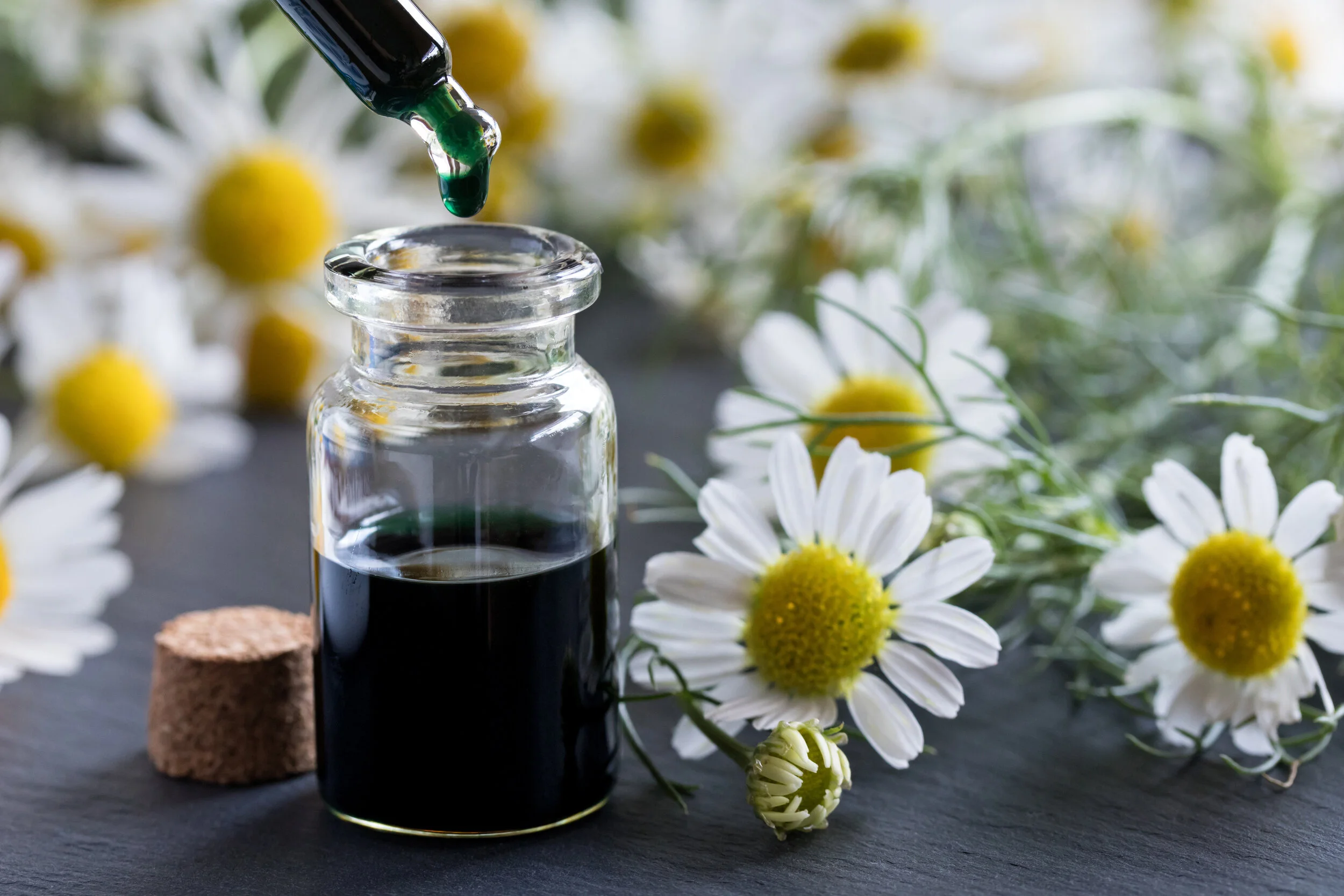Chamomile
Chamomile is an amazingly versatile herb! Coming from the Asteraceae family it boasts the distinctly subtle blossom indicative of its family. You may know its relatives the sunflower and daisy! Chamomile has roots in many cultures dating to ancient Egypt and beyond. Its uses as numerous as the peoples who have found solace in them.
Today two common varieties are Matricaria chamomilla (German) and Chamaemelum nobile (Roman); both with similar flowers that range from white to blue. All of the terpenes and flavonoids in the blossoms give them a sweet, fruity scent that is quite subtle with an apple-like quality. In fact the name Matricaria has roots in Greek and Spanish words meaning apple!
Essential oil
The blue coloring of the blossoms results in a beautiful blue essential oil rich in azulene, a very pigmented terpenoid.
These two varieties grow in distinctly different ways. While Roman chamomile creeps along the ground creating a thick blanket of flowers, German chamomile shoots upward toward the sky in shoots that grow to 1 to 2 feet in height. Both varieties will come back year after year, Roman chamomile is actually a perennial while German chamomile is a reseeding annual.
Roman Chamomile
German Chamomile
Now for its uses! Well, besides being a beautiful plant.
Tea: I know if you’re like me your mother always had a cup of tea ready when a sleepless night came around. Still the scent of it emits a feeling of utter relaxation in me! For centuries it has been used to treat insomnia due to its calming and mildly sedative qualities. Just brew a cup and drift away! For the perfect tea use dried or fresh chamomile blossoms and join the millions that drink it daily.
Tincture: In addition to a brew in water, alcohol is also commonly used to create a chamomile extract or tincture. These are preferred for their higher concentration of apigenin, one of the major bioactive compounds in chamomile. Aqueous mixtures like tea, on the other hand, contain more apigenin-7-O-glucoside. Apigenin-7-O-glucoside is shown to reduce stomach cramping, relieve intestinal gas, and suppress coughing, making the tea perfect for when someone is under the weather or experiencing intestinal discomfort. Apigenin however, has shown antioxidant and anti-inflammatory properties as well as tumor preventing activities. These properties make chamomile extracts or tinctures perfect for an overall system boost!
Apigenin-7-O-glucoside
Apigenin
Topically: Its uses don’t stop there though. Its anti-inflammatory and antioxidant properties soothe skin irritations when applied topically. For that reason it is common in healing salves and ointments for cuts and bruises. Another topical application is in a strong brew; when applied it has astringent properties working to contract the skin cells. Use in a skin toner for calming but tightening effects. It is also used for the treatment of ulcers, hay fever and to promote overall wellness.
All in all the uses of chamomile seem endless! Whether you’re growing it in a garden, drinking it in a tea or adding it to your favorite lotion, chamomile is bound to bring a little calmness to your life!
References







